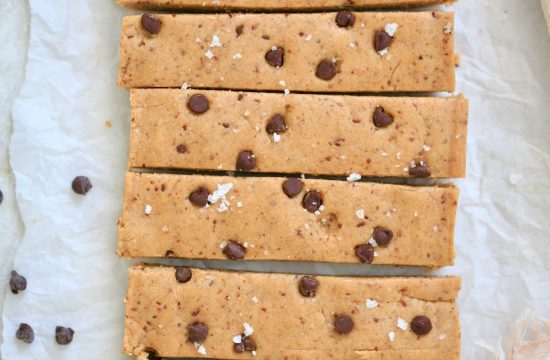What are the benefits?

Although research is still emerging, cycle syncing may help improve mood and energy, while reducing intense period symptoms like cramping and bloating. Cycle syncing may also help balance hormones for those with polycystic ovary syndrome (PCOS).
Phase 1: menstrual (days 1 to 7)

The first phase of the cycle starts with your period, when the body is shedding the lining of the uterus. Estrogen levels are at their lowest, causing energy to be low.
Diet
Replenish the body with anti-inflammatory, nutrient-dense foods to help ease common period symptoms like cramps. Avoid or limit processed foods like chips as this may disrupt hormone balance. Iron-rich foods like lentils may help replace iron lost from bleeding and vitamin C-rich foods will increase iron absorption:
Exercise
While reducing exercise intensity during this time of the month may be smart if energy is low, aerobic exercise can help reduce period symptoms:
- Walking: walk outside during midday for optimal vitamin D absorption.
- Pilates: listen to your body and prioritize low-impact exercises.
- Stretching: put on your fuzziest socks and do a few stretches to relieve cramps.
Supplements
Phase 2: follicular (days 8 to 13)

During this phase, estrogen rises and peaks, causing the lining of the uterus to grow and thicken. You’ll feel energy levels increasing.
Diet
Eat foods to help the body balance estrogen and support increased energy levels:
Exercise
Research shows that during the follicular phase, your body is likely to have the strongest muscle strength and anaerobic capacity for short, intense exercises:
- skiing or snowboarding
- snowshoeing
- high-intensity interval training (HIIT)
Supplements
- CoQ10
- Vitamin D
- Curcumin
Phase 3: ovulation (days 14 to 15)

During this short phase, your estrogen levels peak. Here, you are most fertile, have high energy, and feel most social. Know when you’re expecting to ovulate if you’re trying to get pregnant—or trying to avoid it!
Diet
Continue to eat estrogen-balancing foods—as you did during your follicular phase—including lean proteins, complex carbohydrates, and cruciferous vegetables:
Exercise
Take advantage of your high energy with more intense workouts and increased reps or weights:
- cycling
- HIIT
- ice skating
Supplements
Phase 4: luteal (days 16 to 28)

Feel tired the week before your period starts? This is caused by increased progesterone levels. You may experience premenstrual syndrome (PMS) symptoms, such as bloating, mood swings, and cramps.
Diet
During this time, your body may retain fluid, causing you to feel sluggish or bloated. Steer clear of high-sodium foods and stay hydrated to flush excess fluid. Incorporate calcium- and magnesium-rich foods to ease period symptoms:
- yogurt
- dark chocolate
- acorn squash
Exercise
Your body may take longer to recover between workouts. Opt for strength training and medium-intensity workouts:
- Pilates
- Sledding
- Hiking
Supplements
- Calcium
- Magnesium
- Vitamin D
Seeking more cycle support?
While cycle syncing may help you tune in to your body’s needs and alleviate symptoms like painful periods or bloating, seeing a natural health practitioner like a naturopath or acupuncturist can help you fine-tune your well-being and identify any underlying causes of PMS.











